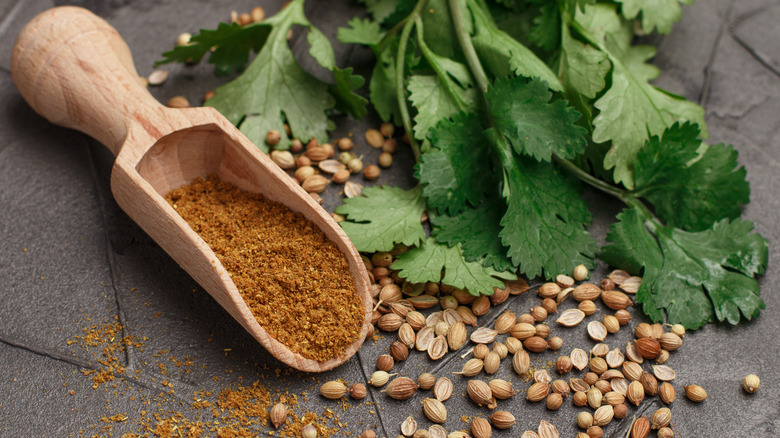Cilantro’s Incredible Potential for Heavy Metal Detoxification

Cilantro, also known as coriander, is a versatile herb widely used in culinary dishes around the world. Beyond its delightful flavor and aromatic qualities, cilantro has gained attention for its potential detoxifying effects. Cilantro operates on three levels to support the process of detoxification:
Heavy Metal Chelation: Cilantro is renowned for its ability to chelate heavy metals from the body. Research suggests that cilantro can effectively bind to toxic metals such as lead, mercury, and aluminum, aiding in their removal from tissues and organs. The compound responsible for this chelating effect is believed to be cilantro’s active component, called coriandrin. By facilitating the excretion of heavy metals, cilantro may contribute to reducing the toxic burden on the body.

Antioxidant and Anti-inflammatory Properties: Cilantro contains potent antioxidants and anti-inflammatory compounds, including flavonoids, phenolic acids, and vitamin C. These bioactive compounds help combat oxidative stress and reduce inflammation, which are key factors in various detoxification processes. By neutralizing free radicals and modulating the body’s inflammatory response, cilantro supports the body’s ability to eliminate toxins and promote overall well-being.
Digestive Support: Cilantro aids in digestion and supports the health of the gastrointestinal system, which plays a vital role in detoxification. It stimulates the production of digestive enzymes, promotes healthy bowel movements, and supports liver function. The liver, the primary detoxification organ in the body, relies on proper digestion and elimination for effective toxin clearance. Cilantro’s digestive support contributes to optimal detoxification processes.
Cilantro supports the body in detoxifying, making it a valuable ally in supporting the body’s natural detoxification processes. Its ability to chelate heavy metals, antioxidant and anti-inflammatory properties, and digestive support contribute to a comprehensive detoxification approach. Incorporating cilantro into your diet, whether in fresh or dried form, can provide a flavorful and healthful addition to your meals while aiding in the body’s detoxification efforts!

Sources:
- Zhai, Q., Narbad, A., Chen, W. (2015). Dietary Strategies for the Treatment of Cadmium and Lead Toxicity. Nutrients, 7(1), 552-571. doi: 10.3390/nu7010552
- Khattak, K. F., Simpson, T. J. (2007). Effect of Coriander (Coriandrum sativum L.) on Blood Glucose, Serum Insulin, and Hemorheological Properties in Diabetic Rats. British Journal of Nutrition, 97(4), 758-763. doi: 10.1017/S0007114507433005
- Xu, Y., Wu, X., Li, Z., Chen, H., & Xiong, A. (2015). Chemical Composition and Health Effects of Cilantro (Coriandrum sativum L.): An Ancient Herb. Food Research International, 71, 94-101. doi: 10.1016/j.foodres.2015.02.040

